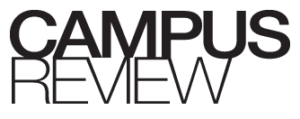 Options to address the massive COVID-19 related hits to university revenue are being considered and implemented. Many universities had large capital projects underway and infrastructure plans in development when the virus hit. One option for budget management that has appeared frequently in university plans is the reduction, delay or deferment of capital/infrastructure expenditure. This is certainly preferable to some of the other options being considered.
Options to address the massive COVID-19 related hits to university revenue are being considered and implemented. Many universities had large capital projects underway and infrastructure plans in development when the virus hit. One option for budget management that has appeared frequently in university plans is the reduction, delay or deferment of capital/infrastructure expenditure. This is certainly preferable to some of the other options being considered.
Remote pivots
Meantime, in this context of uncertainty, universities have pivoted to online and other remote forms of learning very, quickly and this is at least part of the new normal for universities for the short to medium term.
Most higher education can be offered remotely and done so successfully, if not easily. The majority of higher education learning is theory-based and can be well provisioned at a distance. That said, all universities are also grappling with the challenges of what cannot be so easily provisioned remotely. Lab-based, practical, placement, some music and art-based and other subjects are more difficult to teach, learn and assess remotely. Any learning that requires use of specialist equipment found only on a campus appears difficult to manage well from a distance. But human ingenuity, creativity and the fact that necessity is the mother of invention mean that we are likely to see effective approaches to these challenges emerge quickly.
While some alternatives will be less than perfect, there is also the possibility that the creative alternatives might be better than ‘the old way’. Closed book, timed, invigilated, written exams that measure the recall of facts that will soon be outdated – we’re looking at you.
Possibilities: clicks vs bricks
The pause in capital/infrastructure spend and the apparently successful pivot to remote learning together lead naturally to questions about the future of learning, including location and mode. Decisions about these matters will fall to those funding and determining policy for higher education in government, as well as to the executives and Council members who lead universities. Both will be informed, hopefully, by prospective and current student and other stakeholder views.
Herein lies a risk.
Most policy makers, politicians, university executive and university Council members, including myself, were educated last century. For many of us, the initial degree was a time of relatively blissful, unencumbered youth, defined by elite intellectual pursuit and social interaction, all undertaken face-to-face and all undertaken in and around buildings.
The risk is that there may be a tendency for us oldies to don rose-coloured lenses and conjure up sentimental memories, to create a view of the past that may or may not be accurate or helpful to the future. It is easy to forget that, for example, the late 20th century was a time of higher levels of sexism, racism, homophobia and unreported sexual assault, to name just a few issues, than is the case today but we may tend to forget all of that while enjoying reminiscing.
In any case, the experiences of 20th century university education are but part of history now and for the majority of modern university students, the stuff of retro movies and television.
It may be hard for some of us decision-makers to see and understand how profoundly everything has changed in the past 30-40 years since we were first at university in a previous century, even if we work in and closely with universities.
Our own memories and experiences colour our perceptions. In one example, far from the experience many of us had in an elite, exclusive and relatively culturally homogenous cohort back then, a much higher proportion and wider range of students now have the opportunity to go to university. This has not only widened opportunity for individuals and their families and communities, the greater inclusion has enhanced understanding, tolerance and education itself. But a broad range of backgrounds, socio-cultural capital and cultures is not part of most of our histories as students. How well might we understand the needs of these students?
In another example, pre-COVID, many of these students already studied partly or wholly online. Research shows that online provision can mean the difference between access and no access for some students and that without the opportunity to study remotely, they would not have had the opportunity to enter higher education nor earn the qualifications they now proudly hold. Part of the achievements of widening university participation, opportunity and success has come about through online higher education provision, something unheard of in the 1980s when the people now running the world were at university.
It can be tempting to think of this as an ‘add on’ to ‘real’ university education, which occurs in a building, face-to-face. Not any more, and not at all just at this moment.
I’m wondering whether, or to what extent, we decision makers from another era may be at risk of a strong, possibly unconscious pull to ‘ditch the clicks and return to the bricks’ once the first shoots of the new normal begin to emerge. And given the construction industry hasn’t stopped during lockdown, and governments appear keen for an infrastructure-led recovery, how strongly might we be led to pursue our physical capital and infrastructure plans despite an opportunity to rethink?
Might we consider using the pause on the current normal in universities to reconsider capital projects and infrastructure plans, think carefully about the educational pivot we have made and contemplate the potential of investing further in digital as well as physical education? Might doing so enable: lower operating and maintenance costs associated with multiple campuses and buildings; the redirection of funding previously used on such costs to student support, teacher professional learning, digital equipment and high quality internet provision; lower traffic congestion and pollution give students don’t have to drive to university as often; and for these and other reasons, therefore, be a sensible investment in our future?
In terms of digital education, we have plenty of students and staff experiencing this right now who we could ask and a population seeking re- and up-skilling and career change who might be keen to let us know how they would like to study. Might it suit some to continue the digital journey they hadn’t planned but started anyway through being forced to study online, work remotely, socialise with friends and family remotely on various digital platforms, shop online and/or support their children learning at home when schools were closed?
For a range of reasons, we decision-makers need to start to deeply consider to what extent remote provision of higher education should at least be part of the new post-COVID-19 university model.
This article first appeared in ‘VC’s Corner’ in Campus Review in June 2020.
